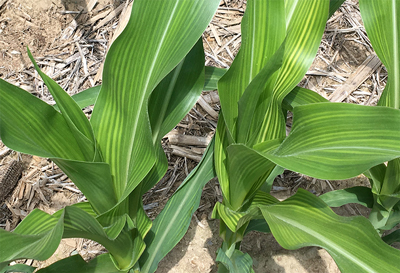U.S. Agriculture: An Industry Built on Hustle Adapts to the New Supply Reality
“Historically, this industry is built on hustle,” says Brett Bruggeman, President of WinField United.
When the definition of good service is being able to deliver same or next day, it’s a tough pill to swallow when such routine essentials as glyphosate and glufosinate are suddenly tough to come by.
At the end of the day, crop prices are high, yet the rough patches are, well, rough — especially for those who don’t operate in the fertilizer side of the ag world that is far more accustomed to wild supply-demand fluctuations.
Glufosinate and glyphosate are front and center to this conversation. Bayer’s Roundup PowerMAX shot up $8.25 on Aug. 20. “At over a 30% jump, that’s a shocker. It’s the new world for retail crop protection,” Harlan Asmus, President and CEO of Asmus Farm Supply in Rake, IA, tells CropLife®.
In the new crop protection world — and most specifically, the glyphosate space — Bayer asks for a Roundup PowerMAX commitment but will not guarantee the price until it hits the retailer’s doorstep. Bayer also cannot guarantee that it will get the retailer the order, he says. “We’re going into a prepay season in November not knowing if we are going to get our committed order to Bayer and not knowing the price on it until it hits the door.”
On top of this, Bayer’s ability to deliver on orders for 2022 is being challenged by the idling of its most productive U.S. glyphosate plant in Louisiana, due to Hurricane Ida.
Not only are glufosinate prices expected to be dramatically higher for pre-pay, packaged goods are also set to be hit by supply challenges more so in 2022 than 2021, on the back of labor shortages that have severely affected shipping.
“The uncertainty that this situation has thrown upon business managers and department managers in the agronomy world is such that the stress level is high. We are not used to this,” Asmus explains.
Asmus is certain, however, that his company will meet its goal to be the trusted, reliable supplier for its customers and that it will deliver 100% of its prepaid orders once again. To be sure, getting to that goal will require different tactics in how it allows people to make purchases and not make promises on what it doesn’t have. “Our philosophy on prepay sales of glyphosate is, we’re really only going to be able to sell what’s in our physical possession. That will be a change for the grower,” he says.
Sales staff will likely propose alternative brands to fill in the gaps, but if a grower is uncomfortable not knowing what the price will be, he or she may choose to buy an alternative before the end of the year to make sure they have their needs met. Some may not want the confusion and opt to simply trade out 100% of their Roundup acres for another brand. There will be winners, and there will be losers.
“We had plenty calling in 2021 that aren’t our traditional customer — one-time shoppers trying to find this stuff. We said no to them, to make sure we would have the trusted and reliable supply for our consistent customer base,” Asmus says, adding: “There was an older guy that challenged me back in the ’90s with a comment I’ve never forgotten. He came in to buy seed, and the seed he wanted to buy happened to be a hybrid that was going to be winter-produced down South. I did the order up like it was no problem. He looked at me and said, with surprise in his voice, ‘You mean you are going to sell me something you don’t have?’ I said, ‘Yeah, I do it all day long.’ To him, that was not a good way to do business.”
Proactive Hustle
What many, including WinField United have done is take a more proactive tack: “We took a mindset around forecasting,” Bruggeman says, describing how the company analyzed SKUs to determine variance — of which typically, there is very little, allowing accurate forecasts via machine learning. The company also launched Evolve, an online ordering app aimed at eliminating fat-finger mistakes and inefficiencies in favor of scheduled deliveries.
“At first, it was painful,” Bruggeman admits, but ultimately, “people say, I’m glad we did that.” He adds, “If you think about it, the supply chain has six or seven steps including all the back-office ordering, delivery, storage, delivery from manufacturer to us, and eventually tracing and trackability that are going to be there with sustainability. We are going to attack every one of those six or seven spots.”
How we got to where we are today began with the Trump Tariffs in 2018 — first, there was a 10% tranche on imports, then a 15% tranche. Imports from China, which manufactures about 70% of all raw materials and inerts, slowed.
Then, distributors and retailers began working down the pile, reducing inventory levels by around half over the last three years, accompanied by widespread active ingredient price depreciation, says Bruggeman.
Covid hit, “then wham — in 2021, 180 million acres were planted, short of forecast. We had shorter planting windows, and it just put a crunch on the supply chain. We would say we were fortunate because we started taking in product early and delivering. We don’t see this changing for 2022,” he says.
“We recognize it’s going to be at least a one- to two-year battle to try and get out of the holes that we’re currently in from supply,” Sam Knott, Director, Central U.S. Crops, Atticus cautions.
“Normally, in July and August, farmers and ag retailers start thinking about fall fertilizer and seed; chemistry is usually an afterthought until fall and winter months,” Knott tells CropLife. “As our retail base is finishing up the current crop year, many are trying to get ahead of the game to prepare for the upcoming season. They have had so many headaches with product shortages and it now requires retailers to be forward-thinking today in order to be prepared for what is coming over the next two years.”
Knott says that Atticus always encourages the local grower to have a relationship with a preferred agronomic source such a crop consultant and a retailer. As massive shifts in traits being planted occur and as supply disruptions arise, growers and retailers need to lay the groundwork in July and August for their seed decisions and herbicide applications for the next year. “And that retailer or supplier for the farmer needs to be communicating to his suppliers and what his needs are, because if farmers or retailers wait until wintertime or next spring to have these conversations, there’s a high probability they will not be able to find the preferred chemistries that they need to control tough weeds.”
The status of the supply chain right now, according to Kate Greif, Liberty Product Herbicide Manager with BASF, is largely to be determined: “We are waiting for the entire logistics and supply chain industry to get back to normal pace. We’re reacting to those disruptions and from BASF’s standpoint, we are continuing to invest in building our supply chain network to solidify our plants. That’s something the entire global market has been seeing and ultimately is a result of the pandemic.”






